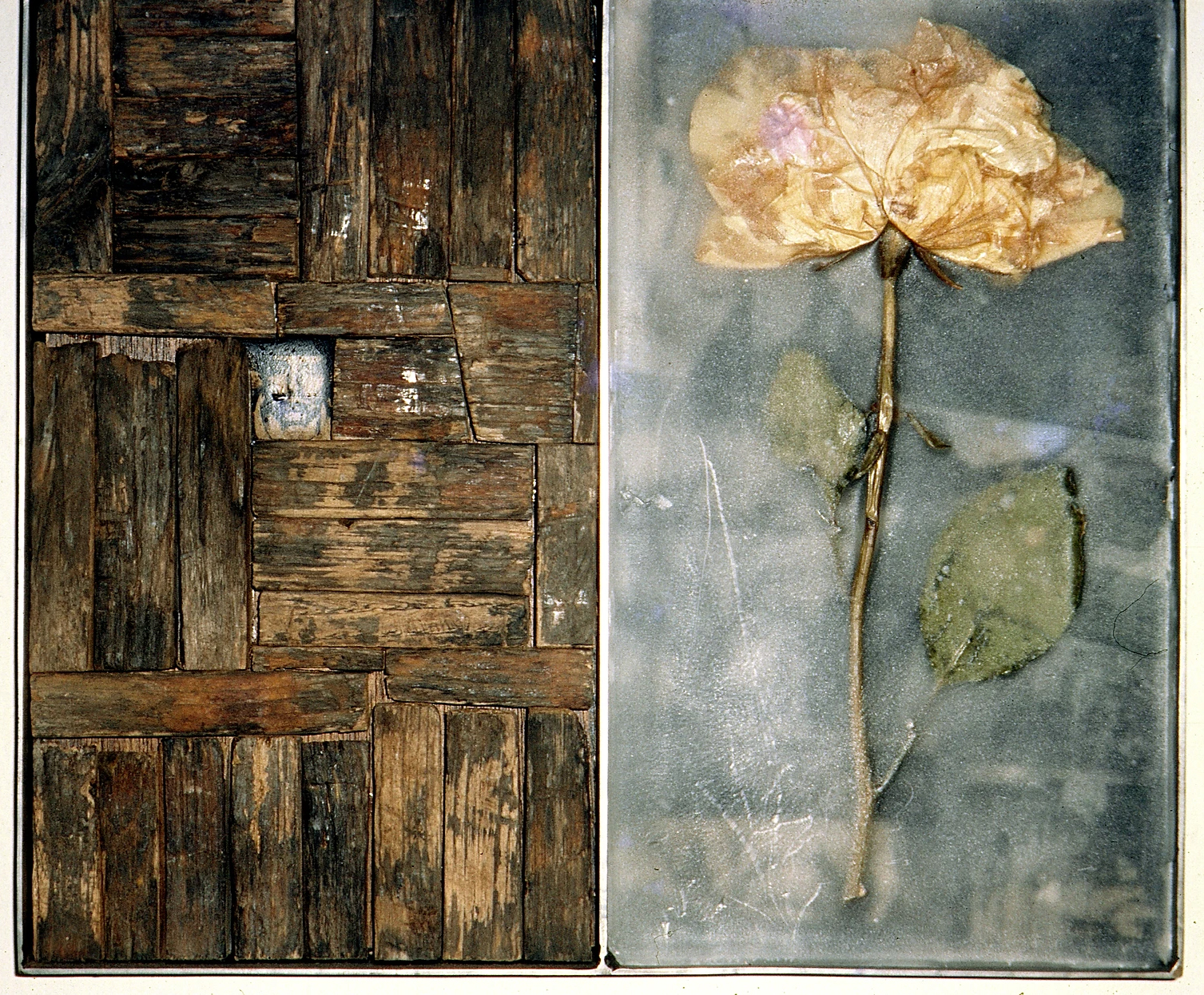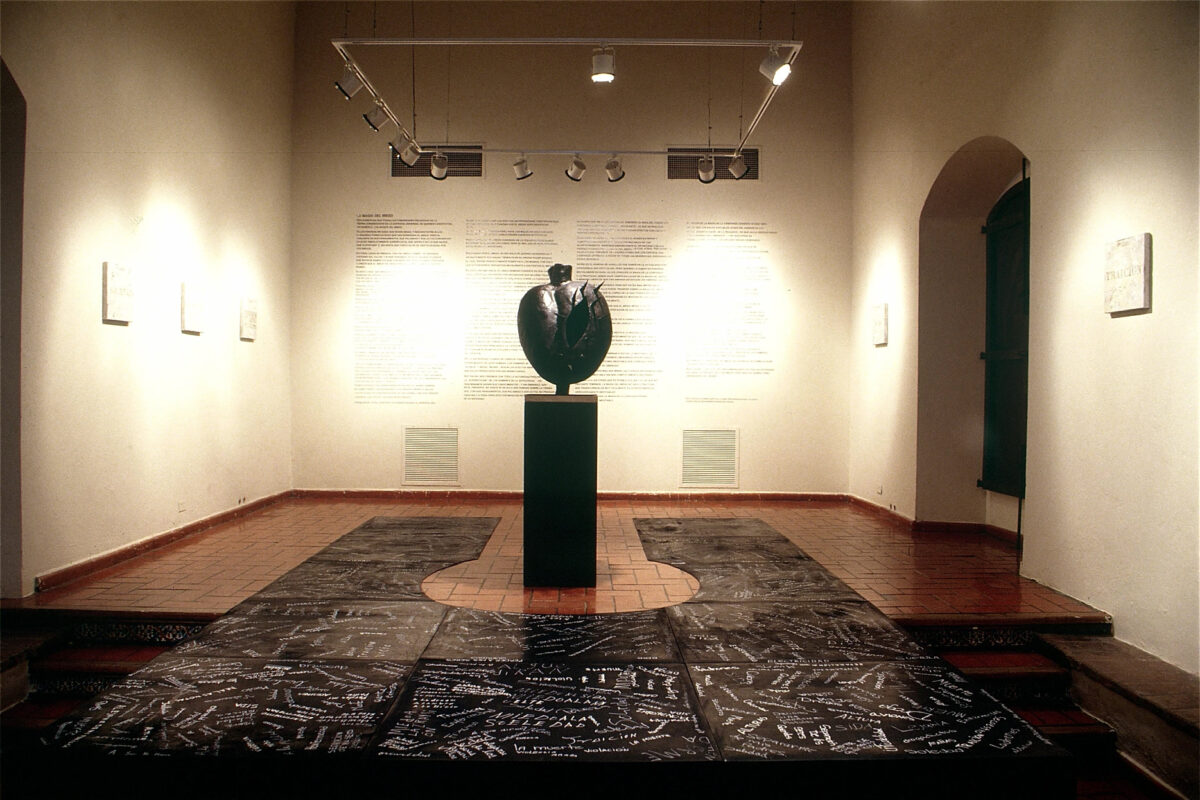I recently visited the cave art at Pech-Merle, in those fascinating sanctuaries of prehistory where, for the first time, Homo symbolicus bears witness to himself, stamping his perception of the world on the cave wall and sprinkling his impeccable superimpositions of horses, bison, reindeer, and mammoths with esoteric punctuation marks (red dots, triangles, nets) that compose an incipient organized alphabet. For the first time, we notice the presence of our own human condition, that of an inhabitant of the world who does not limit himself to relating to his environment in the form of industrial or technological exchange (through the flint axe, or more or less laminated and polished stone) but through the embodiment of symbolic forms. And one would wish to possess the dictionary or encyclopedia that would allow one to adequately decipher these mysterious presences (a hand stamped on the wall, edged in black; shapes resembling udders surrounded by circles and iridescences of red).
The most fascinating, most mysterious aspect of this condition that we are lies in the enigma of our own intelligence. A sensitive intelligence capable of expressing itself in symbolic forms, resorting to figures torn from natural perception, but enveloping them in a halo of enigmatic signs, or hieroglyphics, that give these familiar forms a sacred character.
Magic is the art of acquiring dominion over the sacred. Magic means power. A power that produces an enchanting effect in the recipient. The magician was a powerful sorcerer who acquired dominion over whatever he managed or administered by inducing an enchanting effect upon it. Magic is the very evidence of the power that intelligence confers on the human being. And the human being becomes what he is, an entity capable of rising from the slumber of vegetation or animal sleep to intelligence by virtue of having glimpsed the object in which the greatest power is encoded: that which is inaccessible to humankind itself. This ultimate Lord (of life, of existence) is Death. Death is the presence that awakens intelligence in humankind. And this awakening is anticipated and anticipated by fear. We are intelligent by virtue of that dark feeling that accompanies us throughout our life's adventure.
The merit of this exhibition by Fernando Varela has been to inventory the alphabet of fear. And that is tantamount to determining the protean signs and signals of our own intelligent condition. This intelligence gives us a precarious and limited power that has its greatest, insurmountable limit in death. Fear is the sensitive record of that magical dominion that death exercises over us; a record that makes the very existence of our intelligence possible.
The signs, the traces, the sensitive clues, in their raw presence as an image or Icon, of that intelligence born of fear, fascinated by fear and illuminated in its magic and power by that dark feeling, that alphabet is what Fernando Varela attempts to restore in this disturbing installation, which hovers over its own explanations, and which stands out above the very texts that attempt, precariously, to explain it.
I would recommend that viewers unconditionally immerse themselves in these images, so carefully crafted and elaborate, with their dualisms and contrasts, their borders, and their limits; and I would recommend that they read the accompanying texts, as complementary elements that help orient, guide, or reinforce what is shown in these images. Each image is a fear, since there is no single fear; there are as many fears as there are signs and symptoms of that magic and fascination that sensitive intelligence, operating through symbolic forms, is capable of provoking and producing. Hence the wisdom of calling these symbolic figures, embodied and materialized in the works that make up this important exhibition, "fears," in the plural.
These images are what matter; the texts (this one included) are merely arrows that strike at the heart of the work in order to point it out; to draw blood, so that the recipient, or viewer, is splashed with its symbolic testimony. A testimony that, ultimately, subsists, lurking in its own mystery: the mystery that every image or icon contains within its own unequivocal and transparent presentation.

